|
Today marks day 20 post-operative abdominal surgery for Rainey. From day 14 to today she has been allowed free range of the house, which has helped add some muscle back to her back. On day 15, we started some basic fitness training with her. Below you will find videos of her work-outs this week. She had 3 exercise/rehab days and 1 day for scent work practice. She thoroughly enjoyed getting out of the house and showing us how awesome she is! This week we will review Rainey’s first week post-operatively in regards to her diet and herbals. Rainey was placed on meloxicam (a non-steroidal anti-inflammatory) and Clavamox (an antibiotic) post-op, but other modalities were added to help her rejuvenate what was lost. I will provide a brief description of these. I feel the best way to break this down is to involve headings and possibly lists. Then I will discuss Rainey’s rehab and how to assess your dog and things to look for. Going forward, this series will be heavy on fitness and tracking Rainey’s progress, with additions on each modality that has been used, despite it not being used at that moment! Ready or not, here we go!
Day 0 – the night she came home to Day 14 – the day she was released from restriction
As I said in my last post, Rainey was extremely Qi and Blood Deficient. When I typically touch Rainey, she is hot and her tongue is dark pink to red with her pulses being thin and fast. But on this night, her pulses were deep and weak and her tongue was pale pink and dry, and she was cold to the touch. She also needed to be hand fed. From a Western standpoint, we know this is normal post-op behavior, especially after such a massive infection. The idea is to wait it out and within a few days, the dog will rebound. I wanted her to rebound faster. That night I performed acupuncture using 5 simple points, leaving the needles in place for 15 minutes. Below is a list of the points and the reason they were chosen:
ST36 - Master Point for the GI, generalized weakness, general Qi tonic, nausea, vomiting, stomach pain, LI11 - Mother tonification point for Deficiency patterns, immunodeficiency, fever, abdominal pain LI4 - Fever, immunodeficiency, general pain syndromes GB20 - General pain LIV3 - Support the Liver, abnormal heat cycles, general pain conditions I also injected the Conception Vessel channel with B12. This is called aquapuncture. This channel happens to run along the ventral midline, where the incision is. I injected B12 on each end of the incision, with the thought that this will help heal the broken line that is the Conception Vessel. Rainey rested overnight, and by morning her tongue was darker pink and her pulses were wiry and weakest in the Liver and Spleen positions, which made sense for her condition. The Spleen position was weak because she was tired and weak and lacking nutrients. The Liver position was weak because she had Qi Stagnation and pain.
Rainey is typically fed a cooling diet, but as you can imagine this wouldn’t be a good idea right now. A cooling diet means a diet where the ingredients are energetically cooling. In TCVM/TCM it is believed that all food have an energetic property. In order to understand this, I provide the analogy that in a room of 3 people with the temperature set at 68 degrees Fahrenheit there will be one person who is cold, one person who is warm, and one person who is just right. That is their energetics. The next step is understanding that all food has these properties. The analogy I use for this is on the 4th of July the weather is hot, and the last thing you would likely do is eat a bowl of spicy chili. Instead, you crave a cool, soothing salad. That is because the salad will cool your warm body, and the chili would add more heat to your already hot body. Does that make sense? If we take this a step further, every ingredient of every meal has its own energetic properties. This was something that was determined many, many, many years ago by the Ancient Chinese, and it has stood the test of time. For Rainey, now being cold, feeding a cooling diet would only make her colder. Therefore, she was switched to a diet that was meant to warm her and it was filled with Qi tonics. I did not rush out and make Rainey a new diet. I go above and beyond for my dogs, but not that day. That day I simply fed her what her sisters eat. How handy! Below will describe the ingredients used for Rainey's Food Therapy, their TCVM energetics, and why this ingredients was used:
*Beef - Sweet, Neutral -Tonify Blood, Qi, strengthen bones and sinews, pain, limb weakness *Chicken - Sweet, Warm - Tonify Blood, Jing, and Qi, fatigue, weakness, Blood Stagnation *Lamb - Sweet, Hot - Tonify Qi and Yang, dispel cold, remove Stagnation to relieve pain, cachexia, *Cod - Sweet, Cold - Tonify Blood and Yin, promote digestion, Stagnation, Vitamin D source *Venison - Salty, Sweet, Hot - Cold limbs, lumbar pain, tonify Blood and Qi, strengthen sinews *Shrimp - Sweet, Salty, Warm- Tonify Yang, Blood Stagnation, inappetence *Chicken Egg, whole - Sweet, Neutral - Tonify Blood, Qi, Jing, and Yin, calm Shen *Sweet Potato - Sweet, neutral - Tonify Blood, Yang, and Qi, Blood Stagnation resolve Toxins *Kidney Bean - Sweet, Neutral - Tonify Jing and Qi, Wei Syndrome, Blood Stasis *Black Bean - Sweet, Neutral - Tonify Blood, Jing, relieve pain *White rice - Sweet, neutral - Inappetence, weakness, anorexia, thirst, depression, irritability *Quinoa - Sweet, Sour, Neutral - Tonify Qi, Yang, and Yin, strengthen whole body *Spinach - Sweet, Cool - Moisten Dryness, Soothe Liver, Clear Liver Heat *Celery - Pungent, Sweet, Cool - Send down middle Qi, agitation due to Liver Heat *Rainbow carrot - Sweet, Neutral - Tonify Liver Blood, Soothe Liver Qi, resolve toxins *Parsnip - Pungent, Sweet, Warm - Stagnation, hemorrhage *Turnip - Pungent, Sweet, Neutral - Promote appetite *Beet - Sweet, Neutral - Tonify Blood, detoxify, cool Blood, anemia
The final step in helping Rainey heal as fast as possible was adding herbals to support her. Rainey was started on 3 formulations during the first week – Rehmannia 14, Wei Qi Booster, and Tendon-Ligament Formula. Since Tendon-Ligament Formula will play a part in this story for the next few months, we will save that one for later. Right now, we will discuss the first 2 formulations. Rainey only stayed on Rehmannia 14 for the first 7 days. This formulation nourishes Yin and tonifies Qi and Yang. After she was no longer Qi Deficient, Rainey was switched to Yi Guan Jian, a formulation for nourishing Liver Yin. This will also be discussed at a later date.
The ingredients and actions of Rehmannia 14 are listed below:
*Poria - Clears Damp, strengthens the Spleen *Astragalus - Tonifies Qi *Ophiopogon - Moistens and nourishes Heart and Lung Yin *Rehmannia - Nourishes Yin and Jing *Schisandra - Consolidates and nourishes Lung Yin *Cassia - Warms Kidney Yang *Asiatic Dogwood - Nourishes Liver Yin *Chinese Peony - Nourishes Liver Yin and Blood *Phellodendron - Clears Heat and nourishes Yin *Tree Peony - Cools Blood, clears Heat, breaks Stagnation *Chinese Yam - Tonifies Qi and Jing *Anemarrhena - Clears heat, promotes body fluid and Yin *Sichuan Aconite - Warms and tonifies Kidney Yang
Wei Qi Booster was used to tonify Qi and Blood, as well as boost the immune system to protect against infection by boosting Wei Qi. Rainey just went through a tremendous ordeal, and she needed as much support as possible. The ingredients and actions of Wei Qi Booster are listed below:
*Codonopsis - Tonifies Qi and boosts Wei Qi *Astragalus - Tonifies Qi in the whole body and Wei Qi *Angelica Dong Quai - Tonifies Blood *Hedyotis - Resolve Heat, release Toxins *Scutellaria Barbata - Resolve Heat, release Toxins *Scrophularia - Cools Blood, nourishes Yin *Tangerine - Moves Qi *Lindera - Moves Qi, clears Stagnation
Aside from the above-mentioned herbals and diet, Rainey was continued on the following supplements: CAS Options Medicinal Mushrooms, Welactin Omega 3, Dasuquin Advanced, Vitamin E, Proviable-forte probiotic/prebiotic, VetriScience CardioStrength, and BalanceIT. At 24 to 36 hours post-op, Rainey remained quiet, but was eating on her own and was aware of her surroundings. It was another low-key day for her. I stayed by her side the majority of this day, only leaving for a couple hours to see some clients. She had not defecated yet, but was urinating well. She received another simple 5-needle acupuncture treatment, focusing on her immune system, but added support for her Liver and Gallbladder. The following points were used for another 15-minute acupuncture session: GB34 - Influential point for tendon and ligaments, weakness, general pain relief LI11 - Mother tonification point for Deficiency patterns, immunodeficiency, fever, abdominal pain LI4 - Fever, immunodeficiency, general pain syndromes GV14 - Clear Heat, immunodeficiency LIV13 - Mast point of Viscera, abdominal pain, agitation and anger, generalized pain 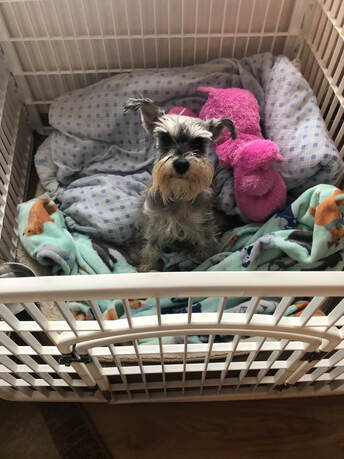 Rainey is ready to be freed from jail! Rainey is ready to be freed from jail!
By 48 hours post-op, my Rainey was beginning to return. She was weak, but she was walking. Her ears perked up at the sound of food, and a bark could be heard every once in a while. The greatest gift was that evening when I returned from seeing clients all day, Rainey barked for me to visit her in her pen! She was starting to feel better! Rainey received her 3rd round of daily 5-needle acupuncture. This treatment continued to focus on her immune system, and Liver, but added support for her Kidney and Spleen. The following points were used for another 15-minute acupuncture session:
BL20 - Bask-shu association point for the Spleen, Spleen deficiency, pancreatic and digestive disorders BL22 - Back-shu association point for the Triple Heater, abdominal pain BL23 - Back-shu association point for Kidney, Kidney Qi Deficiency LI11 - Mother tonification point for Deficiency patterns, immunodeficiency, fever, abdominal pain LIV13 - Mast point of Viscera, abdominal pain, agitation and anger, generalized pain
By day 3 post-op, Rainey was Rainey. She told us she was going to be ok by jumping out of her x-pen and running to the door to be outside with the rest of the dogs! This was when Rainey was down graded from a spacious x-pen to a full crate to prevent her from running amuck through the house when we were not watching. Despite feeling her best, Rainey needed to be confined until at least day 10 to prevent a seroma (fluid under the skin) and to prevent her sutures from coming loose. Up until day 7 post-op is the highest risk for sutures to fail, but it is ideal for animals to remain confined until day 10 to 14. For Rainey, we chose day 14. Between day 7 and 10, Rainey was allowed to wander the house, but not allowed to do stairs or jump on furniture, and she was confined when we were gone or not directly supervising her. From days 10 to 14, Rainey was allowed to use the stairs and have free reign of the house while we were home, including jumping on furniture, but was confined while we were gone. Day 14 and forward, Rainey had no further restrictions and was returned to the house pet lifestyle, but still nothing crazy for a while to come.
During the first 14 days post-surgically, there are a few important things to watch for. We are all aware that your pet should be eating and drinking, but also know you must monitor for signs of urination and defecation, as well as vomiting. It’s not uncommon for a pet to have some coughing after anesthesia from irritation of the endotracheal tube, but they should not have excessive coughing. If your pet is exhibiting any signs that stray from their normal, please contact your veterinarian immediately. Another sign to watch for is suture dehiscence or stitches failing. This may be noted as the obvious opening in the skin incision or less obvious a bulge under the skin. A bulge under the skin may also indicate a seroma. A seroma can occur when the normal serous fluid gets caught in a space between the skin and muscle. This typically occurs when the pet has too much activity during the first 7 days. However, a bulge under the skin may indicate something more severe, such as the suture of the linea alba (remember blog post 1 of this series) have failed and there may be abdominal fat or even worse, intestines, coming through the incision. This is a medical emergency, and your pet should be seen as soon as possible. Day 15 to Day 20 – returning to function:
Day 15 was the first day I tested Rainey’s core strength and her ability to engage her core. Prior to Rainey’s surgery she had one of the strongest cores I have seen in dog. I would love to give myself the credit for this, but it’s actually partially due to how she urinates. Yep…you read that right. Ever since I can remember Rainey urinates by crab walking. She will squat, lift her rear legs, and balance on her front legs, as she swivels her back end left to right, while walking forward. For real. She does this. Every time. The saddest moment of her recovery was when she tried to do this post-op for the first time, and it hurt, real bad. Just 9 days before her surgery, which she was potentially 10 days day pregnant/post-breeding, I was trying to teach Rainey a kick back stand. This is where the front feet stay planted, while the back feet reach back into a standing stacked position. Instead of doing this, Rainey took it a few steps further, and provided me with a hand stand, climbing up the wall with her back feet. It was hilarious! But it was also a demonstration of her athletic ability and core strength.
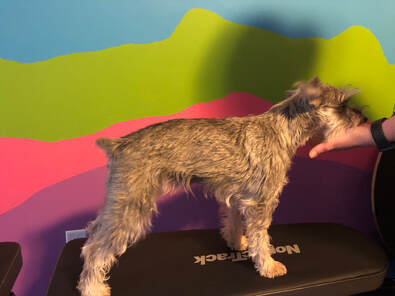 Note the 'arch' in Rainey's back Note the 'arch' in Rainey's back
On Day 15, January 26th, 2021, I made a chart on the white board in my dog room with a list of exercises and the day of the week. I would mark off what we did which day in order to better track her progression and not to double up on things two times in a row. The first thing I did was evaluate Rainey in a normal stacked position. In this position I can determine her comfort and look for any abnormalities. What I noticed is Rainey’s back was kyphotic or arched at about lumbar vertebrae 3 (L3) to L5. This was not too unexpected, given it was likely a guarding position she had developed over the last two weeks to protect her sore belly/incision. That evening I did assess Rainey using spinal manipulation aka animal chiropractic, and provided the necessary adjustments. The next thing I did was evaluate if she was engaging her core and what her core strength was. A dog can have a strong core, but not be engaging in it, whether due to pain or weakness locally or distantly in the body. How I do this is through diagonal leg lifts. When I lifted Rainey’s right front and left hind she quivered on her right hind leg. When I lifted her right hind and left front, she again quivered. During this attempt, her back remained arched and when I felt her core it was mildly strong. This told me that she was not engaging her core to support her back and her hind legs. This may have been a pain response or a muscle loss issue or both. At this time, it is important to note that throughout the surgery to 14 days post-op I noted a tremendous amount of muscle loss over Rainey’s back or topline. It wasn’t unexpected, but it was shocking. It is stated that a dog can decondition in as little as 14 days of restriction. Add to that restriction a major illness and surgery, and the catabolism of her muscle expediated. Rainey also had no fat to lose during this adventure, which did not help her retain her muscle mass.
Next in my foundation assessment of Rainey’s core and overall fitness level was evaluation her functionally while she completed her down to stand. The premise of a down to stand is to teach the dog to push off the rear and the front equally, rising the rear at the same speed as the front, while all 4 feet remain stationary, and then immediately repeating the exercise. This will aid in balancing the dog, strengthen their core, and in turn strengthening their back. It is also an excellent exercise for learning to power off the rear from a down. Prior to this surgery you can imagine Rainey had a very nice stationary down to stand. As expected, Rainey now was not engaging her core, her rear end appeared weak, and she was fatiguing quickly. As you can see in the attached video, even from push off 1, Rainey was pulling her rear up with her front end, and by attempt 3 she was fatigued. As heartbreaking as it was to recognize these changes in my once strong girl, it was a very important step for establishing a baseline. I needed to know what I was dealing with in order to know when she was ready for the next thing. Therefore, these 3 things will serve as my markers of her progression. I urge any owner whose dog is experiencing the same type of surgical intervention to use these 3 factors to gauge your dog’s progression, and to keep video and photo evidence for comparison.
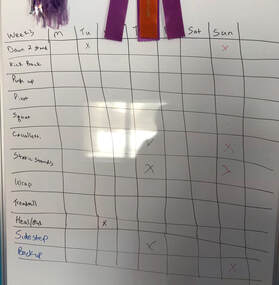 Tracking Chart Tracking Chart
Rainey received a rest day on Wednesday, and Thursday we performed cavelletti’s, static stands, and side steps. Cavelletti’s are performed to enhance foot placement and reaction time, also referred to as proprioception. There are several different variants of cavelletti’s, but for this purpose I space them out as far as the dog is tall at the withers, and I look for a nice gait pattern of two feet landing in center at the same time. Evaluating your dog through cavallettii’s will allow you to look for any lameness or compensatory changes they may have, catching them early. Rainey’s cavalletti performance from January 31st, 2021 is included in the video below, with an extra slow-mo version. Static stands are a simple, yet great exercise for dogs. When done on the flat (aka ground), it begins the process of core engagement, balance, and proprioception. When the dog is able to stand still for at least 10 seconds, you can add tapping on their hips and shoulders. This will increase their ability to properly balance, as well as core engagement. For Rainey, this exercise was too simple on the flat, therefore we performed on mini FitBones. In the attached video, you can see I also add small amounts of head turns, forward motion, and backward motion to increase her complexity. The last exercise that day Rainey performed was side stepping. Side stepping works the muscles of the inner and outer thigh and shoulders, as well as some core movement. The goal is to have the front feet cross and the back feet cross as the dog moves laterally left and then right. Side stepping is another great exercise for balance and proprioception. It can be made more completed later on in the healing process.
On Saturday, Rainey was finally able to leave the house to do something – she had a private nose work lesson! It was outdoors, and we managed to prevent her from doing anything too strenuous. Rainey had a blast and it was an excellent mental exercise for her! On this day I happened to catch Rainey free stacking on the work-out bench, and took a photo. After 2 days of targeted fitness and 5 days of allowing her to free range in the house her back was already straighter!
Sunday, we returned for another day of fitness, completing down to stands, cavelletti’s, static stands, and backups. Rainey now had much better form and function for her down to stands and did not fatigue! Yay! We’re making progress! We finished our exercises with a backup. Typically, Rainey would backup to a higher object, life a full size FitBone, but today I just wanted her to target to something, so I used the ramp. Backing up is an excellent exercise for core strength, as well as proprioception. An ideal backup involves the dog separating both their back legs for individual steps. If the dog hops backwards we likely have an issue and should be evaluated. To my surprise, Rainey had no issues backing up.
That brings our first 3 weeks to a close. Throughout this time frame I have watched my powerful, spirited dog turn into a wounded animal, and then return to her powerful state, demanding she be put to work. I can definitely see why, at this stage, owners feel it would be ok to return to sport with their dog. But just because the dog wants to doesn’t mean it should. The same could be said if the dog wanted to eat a bowl of grapes – that’s not really the smartest idea and they do not know that. It’s up to you, the owner and handler, to make the right choices for your sport dog. If you want your dog to have a long, healthy career take things slow. Seek the appropriate help. And don’t let the dog bribe you into allowing them to do something too soon! I know Rainey thinks she is ready, but she is most definitely not! I am certain we could trial next weekend, but would she hold up 6 months down the road? Unlikely. It is up to you to make the best decisions for your pet, after all, they are counting on you! Rainey is not where she once was, quite yet. I can feel she lacks muscle over her topline, despite engaging her core better. She is stronger than she was a week ago, yes. However, her linea is still healing. To promote its healing, she continues to get laser therapy every 3 days. I can still feel the suture under her skin, but they are getting softer. Her spirits are high, and she wonders why she can’t do agility.
We covered a lot of ground today, but I felt I needed to paly catch up. Next week, I will expand on her current diet and current herbals, as well as provide assessments for her progress. In the future we will expand on laser therapy, the Assisi Loop, and Tui-na massage. The road to recovery is long, and sometimes there are setbacks, but the time it takes to get there will always be worth it!
Take care and may the Qi flow freely for you! Dr. Shantel Julius, DVM, CCRP, CVA, fCoAC, CVSMT, CVFT, CVTP, CVCH, CTCVMP References: Xie, H., Preast, V. Xie’s Chinese Veterinary Herbology, 1st Edition. Wiley-Blackwell, 2010. Fowler, M,. Xie, H. Integrative and Traditional Chinese Veterinary Medicine Food Therapy Small Animal and Equine, 1st Edition. Chi University Press. 2020. Millis, D., Levine, D. Canine Rehabilitation and Physical Therapy, 2nd Edition. Elsevier. 2014.
1 Comment
We are now at Day 13 post-operative abdominal surgery for Rainey. Life remains very boring for her as she continues to allow her incision to heal, and heal it has. Therefore, this week I will be very heavy on the theory of TCVM, in hopes for you to gain an understanding of how TCVM works. I realize this can sound a little crazy, but bear with me. And if you have a Western trained medicine brain, try to think of it as learning medicine in a different language. It can be a little dry and a little confusing. I will try to provide info that is pertinent, but we may get over our heads.
Sunday afternoon was when I noticed her abdomen was painful, but no fever. She ate kibble if I hand fed her, but she wouldn’t touch her homemade diet. Monday morning, she wouldn’t get out of bed. I immediately took her into her reproduction veterinarian, who verified my worst fear - a uterine infection that would require an emergency spay to save her life. There was no hesitation in my mind that spaying her was the correct option. Rainey was placed on IV fluids, and surgery was performed later in the morning. Surgery was successful and Rainey was discharged to go home that evening. When I picked Rainey up that evening, she was tired and painful, and I could tell her body had been through a lot. When we got home, she did urinate, but wanted to spend the rest of the night being held. She ate if I hand fed her. Rainey was suffering a significant Qi and Blood Deficiency. The infection and the surgery had drained the literal life out of her. My usual ‘hot’ dog was incredibly cold and lethargic. In TCVM, Qi is your life force. Where there is Qi, there is life, and where there is no Qi, there is death. A living being is born with Yuan Qi or Source Qi, which originates from Prenatal Jing. Prenatal Jing is the foundation of life, and it is the lifeforce you accumulate from your parents. Think your DNA, RNA, etc. Then there are seven other forms of Qi – Zong Qi, Gu Qi, Ying Qi, Wei Qi, Zang-Fu Qi, Jing Luo Qi, and Zheng Qi. For the purposes of this blog, I will only expand upon two forms of Qi – Gu Qi and Ying Qi. Gu Qi is the nutrients that you absorb through your diet, and it replenishes your Yuan Qi, as well as provides the building blocks for all the other forms of Qi. Gu Qi also provides your body with Postnatal Jing, which aids in keeping you healthy while building your defenses or immune system to prevent illness. Have you ever heard the term ‘burning the candle at both ends’? This refers to a person working so hard that they are literally burning up both their predetermined Prenatal Jing and their accumulated Postnatal Jing. They will tire easily, and eventually burn out if they are not taking the proper steps to keep themselves balanced and healthy. As you can imagine, a proper diet is one of the best ways to keep yourself healthy. In TCVM, Blood contains and circulates Ying Qi through the vessel of the body. Ying Qi or Nutrient Qi is derived from, you guessed it, Gu Qi – what you eat. It makes sense, from a Western standpoint, that what you eat promotes healthy blood circulation and improves your overall health. The function of Blood in TCVM is to nourish and moisten, as well as carry Qi. Nourish and moisten makes sense, if you consider how blood travels through your body, but let’s take it one step further. In TCVM, we have meridians or channels. I feel this is common knowledge. But what may not be common knowledge is that each of the channels is associated with an internal organ. Now, I do not want to go down this rabbit hole, as I could provide hours of reading for you about each Zang-Fu organ and how they corelate and relate. Therefore, for the topic of discussion we will stick with identifying the Liver and the Heart. But wait (do you feel like you’re on a made for TV infomercial yet?) we need to break into the 5 Element Theory and Yin-Yang BEFORE we can talk about the Liver and the Heart. I will try my best to keep this as simple and concise as possible. As most of my clients and friends are aware, I have a tendency to be long winded and go off on tangents. We will revisit Blood in a moment….. The 5 Element Theory and Yin-Yang – in TCVM I assume most of you are familiar with Yin and Yang. You cannot have Yin without Yang, and vice versa. One is light (Yang), while one is dark (Yin). One is hot (Yang), one is cold (Yin). One is feminine (Yin), one is masculine (Yang). When you combine the two, you are whole. But sometimes one dominates (Excess) or one is weak (Deficiency). The five basic principles of Yin-Yang are:
The Five Element Theory was born when the ancient Chinese observed the world, and became fascinated by the seasonal changes. As everything in the universe can be divided into separate Yin and Yang categories (there is a long list of this if you want to search it), the ancient Chinese also divided the seasonal changes into five forces – Wood, Fire, Earth, Metal, and Water. Taking this a few steps further, the theory of Five Elements was born and everything in the universe can fit into five categories. Various items such as seasons, directions, climates, colors, tastes, and body parts were grouped together under a common element, with a Yin and a Yang organ accompanying them. This later became the foundation for TCVM. When used appropriately, the Five Element Theory can describe the complex relationship between the body’s internal organs, as well as the body’s relationship with the natural world. Combine Five Element Theory with Yin-Yang theory, and a practitioner can produce a clinical diagnosis and treatment plan individualized for the patient.
They love to be held and petted, but on their terms. As such, sometimes it is difficult to work on a Fire animal. They may accept it, or they may absolutely refuse. As a Fire animal, Rainey LOVES to work or perform. Working is her joy. But she can get frustrated, and when she does, she lets me know by barking, but she is relatively harmless. Rainey must be the center of the party. If another dog is getting attention, she will literally push them out of the way. She is a difficult dog not to love! Wood is the Mother of Fire, and Fire is the Child of Wood, when discussing the Five Element Theory (it goes in a circle – Wood – Fire – Earth – Metal – Water – back to Wood). Wood organs are the Liver and Gall Bladder. In TCVM, the Liver nourishes tendons and ligaments and maintains smooth flow of Qi. When the Fire element is weak, whether from illness or overwork, it drains from its Mother, and when left unchecked, the Mother (Liver) can become Deficient. We can see drying of body fluids (Blood), and in the case of tendons or ligaments, they may become dry and brittle, resulting in tears or fraying. This can be seen in overworked sport dogs. The majority of sport dogs are Fire or Wood constitutions. Aside from mental issues (whether overarousal, anxiety, or irritability), we see a lot of tendon and ligament injuries in these dogs. Yes, it is the nature of the game, but WHY a PARTICULAR dog over another? What was different about Dog A from Dog B – same breed, same attitude, same training, but different diet, different body work, different supplements, different feedback loop on the Five Element Cycle. TCVM can explain it. A balanced dog, one who receives the proper nutrition, supplements, herbals, etc will be less likely to suffer an injury. However, if the injury was a true accident, TCVM can help bring this acute Excess back into balance. This may raise a question – then why did Rainey, the dog of a TCVM veterinarian, develop a life-threatening uterine infection? Were you not taking the precautions to keep her as balanced as possible to prevent such a thing? The answer is yes and no. During pregnancy you want to preserve Blood, you do not want to move Blood. As you can imagine moving Blood would sound a lot like a miscarriage. Therefore, a lot of things need to be stopped during pregnancy that would otherwise prevent bad things from happening. And sometimes, no matter how hard you try, fate, and sometimes genetics, have other plans. The best you can do is the best you can do in the moment.
Do not worry – from a rehab standpoint you are still not missing a thing. Rainey is still on restriction from running, jumping, playing, and stairs. She remains in her kennel when we are gone. Her sutures were removed at day 11 post-op. She continues to receive laser therapy for cellular healing and regeneration every 3 days, but the use of the Assisi Loop to stimulate cellular healing as been discontinued. I fear I do not have enough space throughout this series to dive further into those modalities, but I also know some weeks will run short, and we may revisit them then. For now, I will let you go with the promise that next week we will discuss how nutrition plays a roll in recovery, how herbals can stimulate healing and recovery, what role acupuncture and Tui-Na play, and how on week 3 post-abdominal surgery we will begin to return to function and what signs you should look for that your dog is not ready! Take care and may the Qi (now that you know what that is) flow freely for you!
Dr. Shantel Julius, DVM, CCRP, CVA, fCoAC, CVSMT, CVFT, CVTP, CVCH, CTCVMP References: Xie, H., Preast, V. Traditional Chinese Veterinary Medicine Fundamental Principles. Chi Institute Press. Reddick, FL. 2016.
Over the next 12 weeks I will create a blog series that incorporates weekly progress updates of my 4-year-old mini schnauzer Rainey, as she recovers from the worst kind of spay procedure - an emergency spay due to pyometra, a life threatening uterine infection. To make this series more than your average fitness story I will also include how recovering from an abdominal surgery fits into the spectrum of Traditional Chinese Veterinary Medicine (TCVM). TCVM looks at the whole patient, and as such it contains 5 Branches - acupuncture, Tui-na massage, nutrition or Food Therapy, herbal medications, and physical activity.
needed. Then 2-3 days a week for 5 to 10 minutes she receives fitness/conditioning training where we focus on different muscle groups and proprioception, as well as continuing to build the propulsive force for driving off her back end. She also performs cardio High Intensity Interval Training (HIIT) on the land treadmill for 10 minutes 1-2 days per week. Then 2-3 weekends per month, before COVID, and 1 weekend a month or less now, we participate in agility trials. There she would run 4 to 6 runs a day for 2 to 3 days in a row. She would receive off days before and after competition. Then there’s scent work training, which only occurs 1-4 times per month. That doesn’t seem physically demanding, but it can be. Rainey is just over 12.5 inches tall. Some of her searches have her jumping on/off tables, standing on her back legs, or crawling under things. Also, the mental demand of scent work is extremely high. The dog must think, while smelling and following an odor as it fades in and out of existence, until finally they hit the cone of scent and drive to the source. We will typically perform 6 searches in a short time frame. As you can see, this little dog is very busy and on January 11th this all came to a screeching halt as Rainey was rushed to emergency surgery.
until week 6 post-operatively. Granted, these injuries typically occur on a weight bearing limb. When we discuss the linea alba we are not necessarily weight bearing, but we are bearing the weight of the abdomen. And in the case of Rainey, she has a 1.75-inch incision in her 8-inch xiphoid to pubis linea alba, therefore the incision encompasses 21.8% of her total linea alba. It’s a well-known fact that an animal and humans’ core is their driving force for speed, and a strong core aids in a strong back. If an animal has a strong core, they will inherently have a strong back, which will aid in their overall comfort, speed, and injury prevention. Therefore, it can be assumed that if the time and steps are not taken to secure proper healing of the linea alba the patient will suffer with a weaker core, therefore potentially weaker back, slower ground speed, and possibly increased susceptibility to injury, including iliopsoas strains. However, to my knowledge no actual data supports this hypothesis, but my clinical studies of anatomy and physiology, as well my experiences with canine and human athletics do. As this series unfolds, we will discuss further how the canine core supports this hypothesis and why a strong core is so important.
|
AuthorDr. Shantel Julius, DVM Archives
April 2021
Categories |
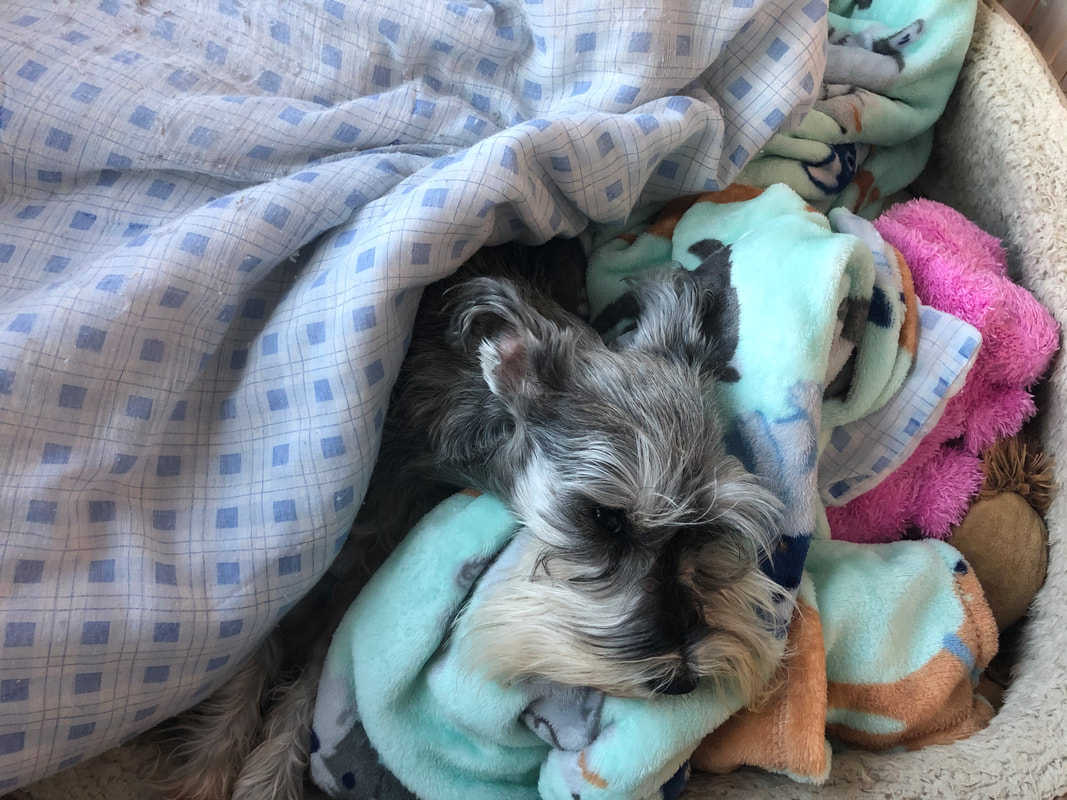
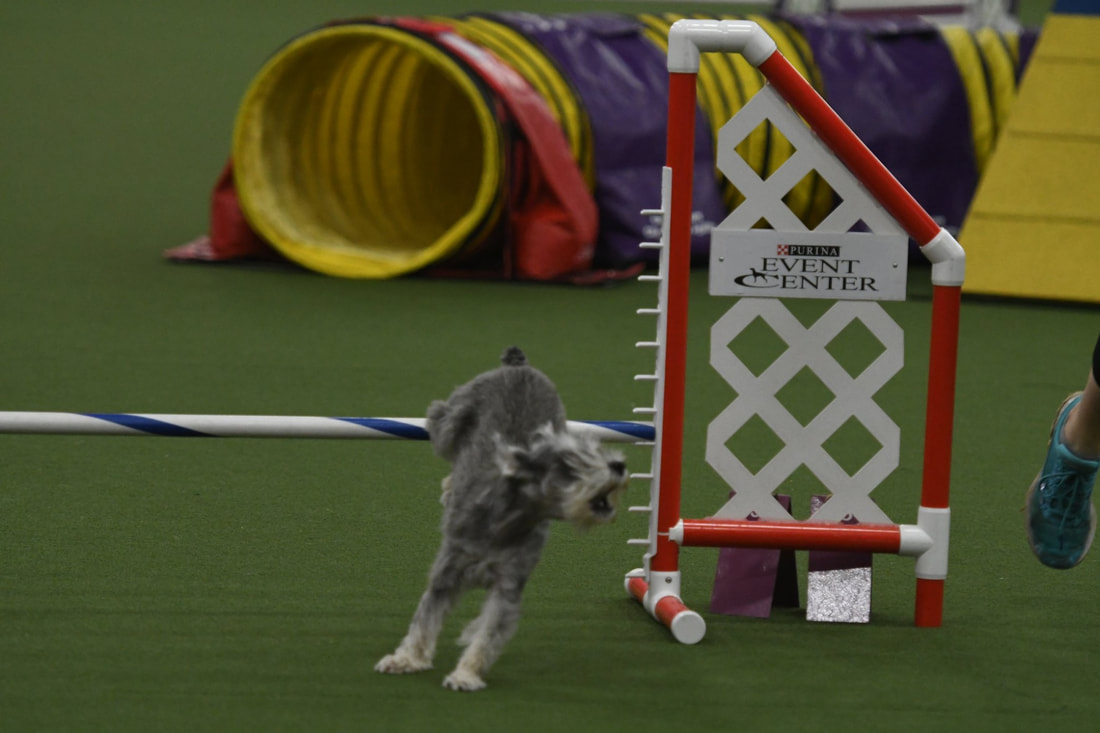
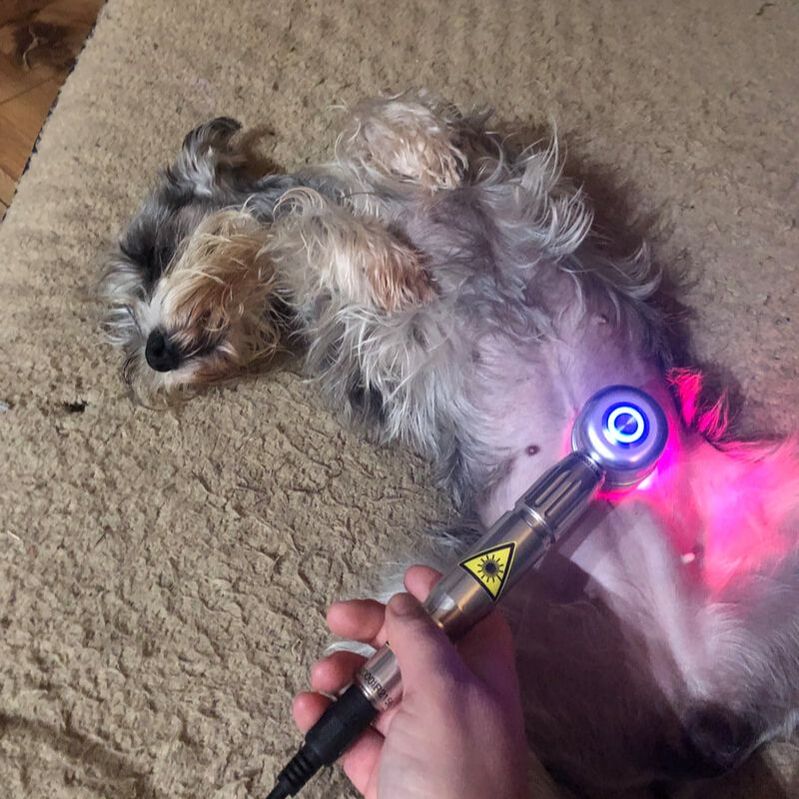
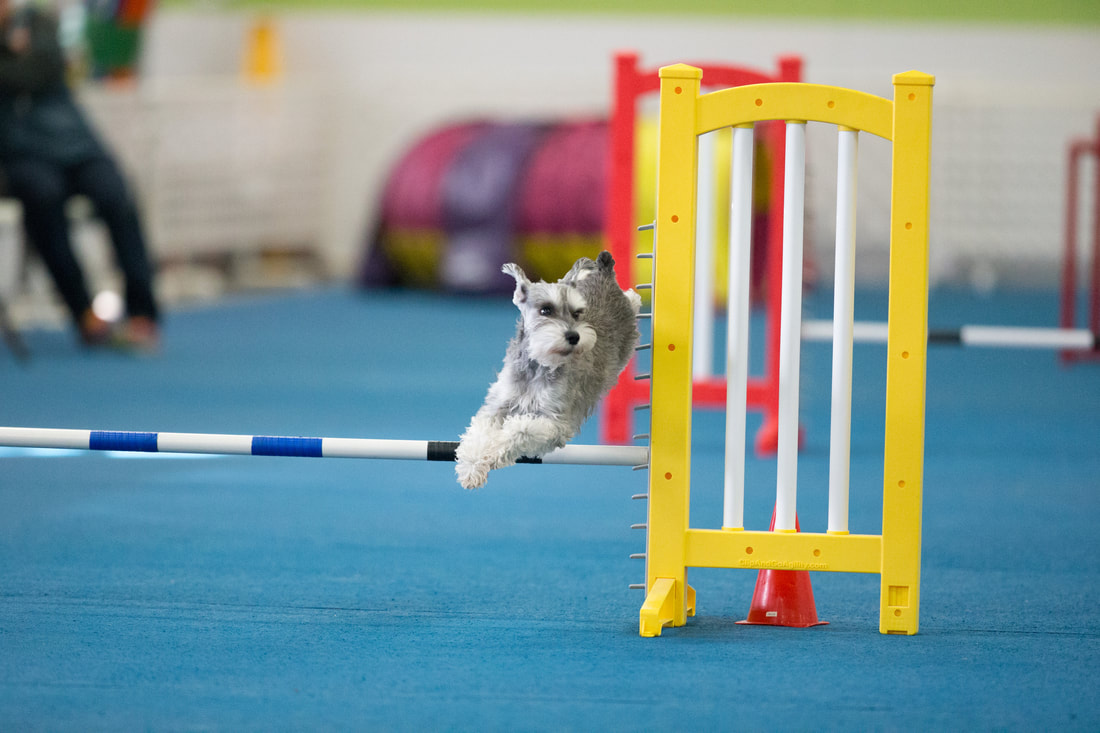
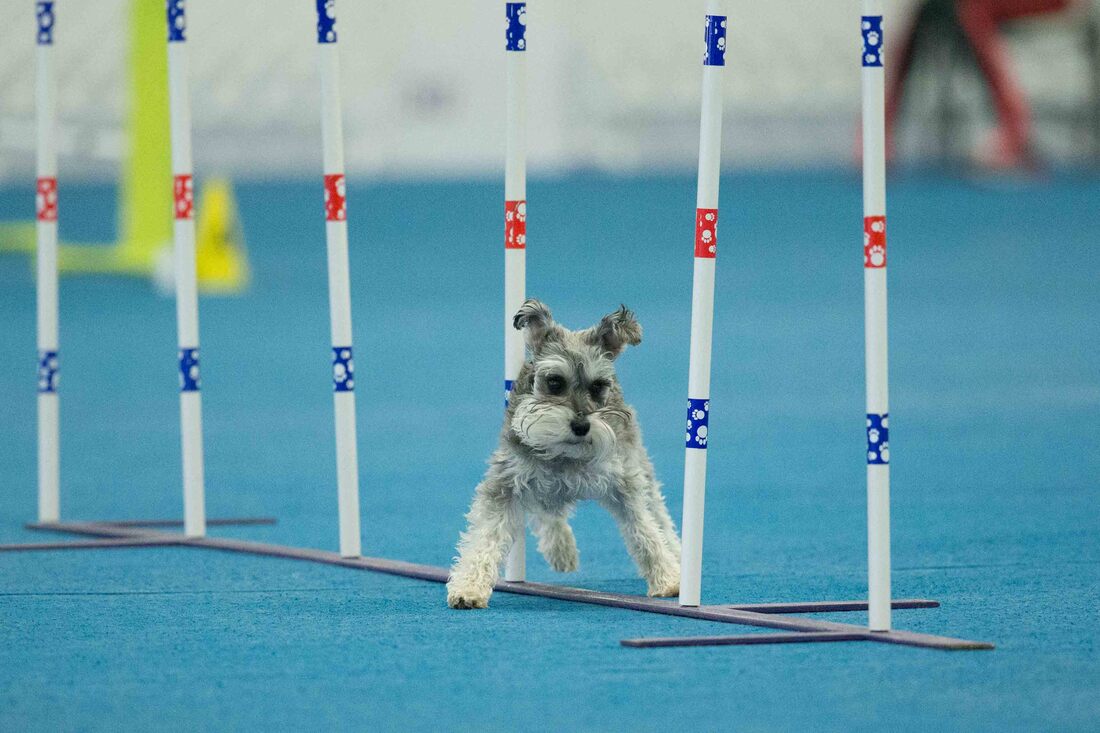
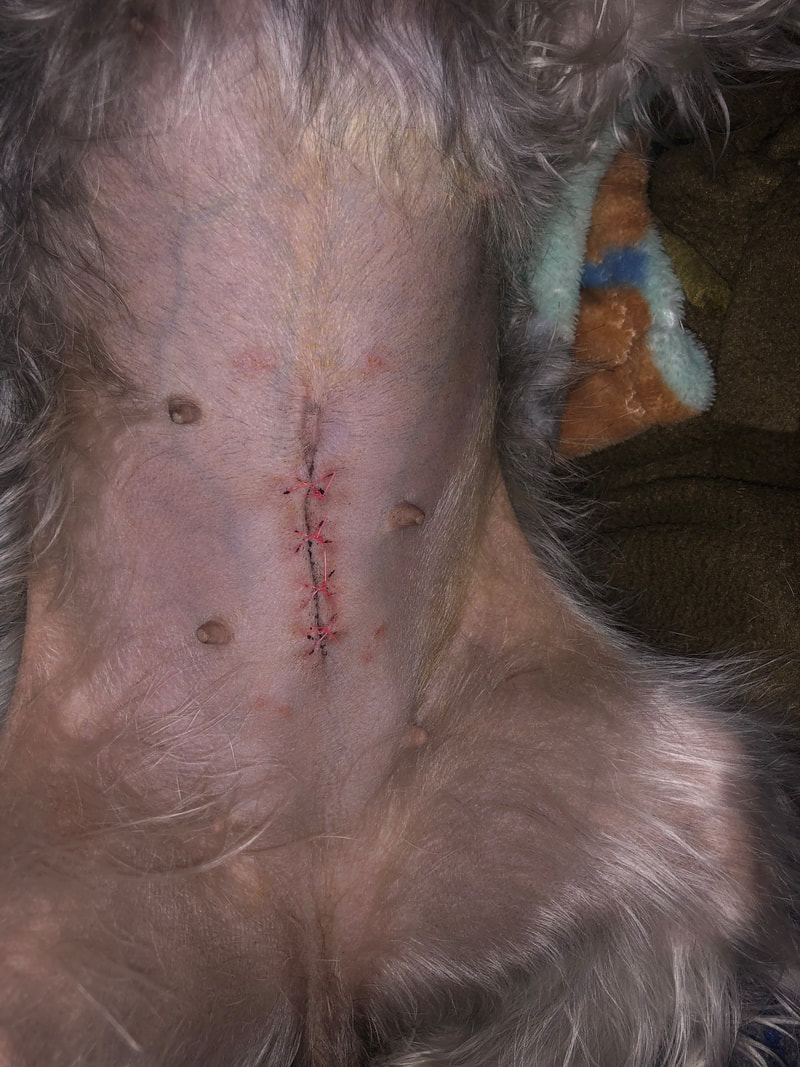
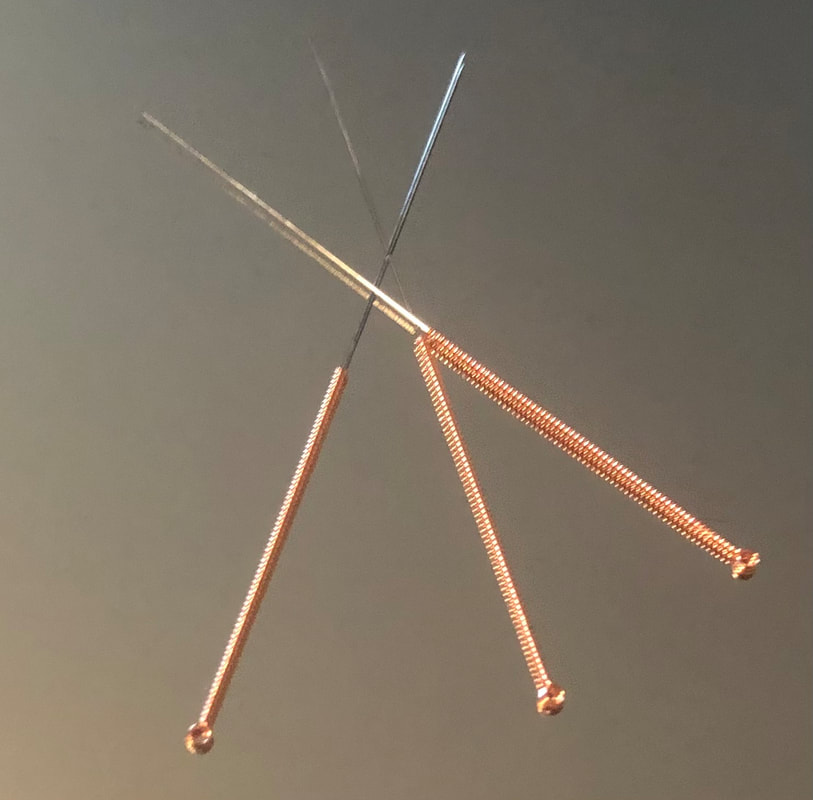
 RSS Feed
RSS Feed